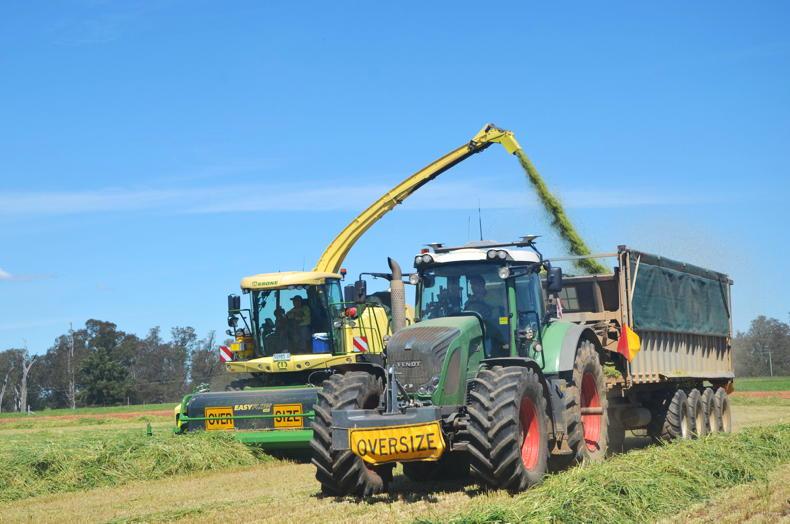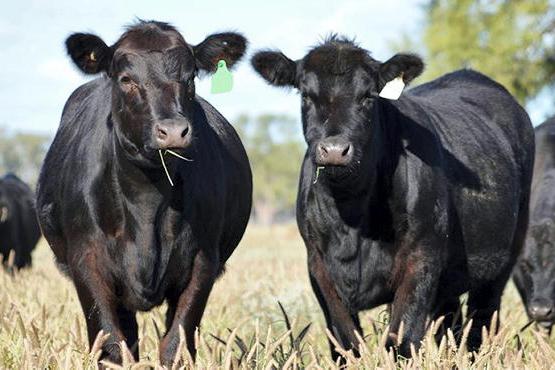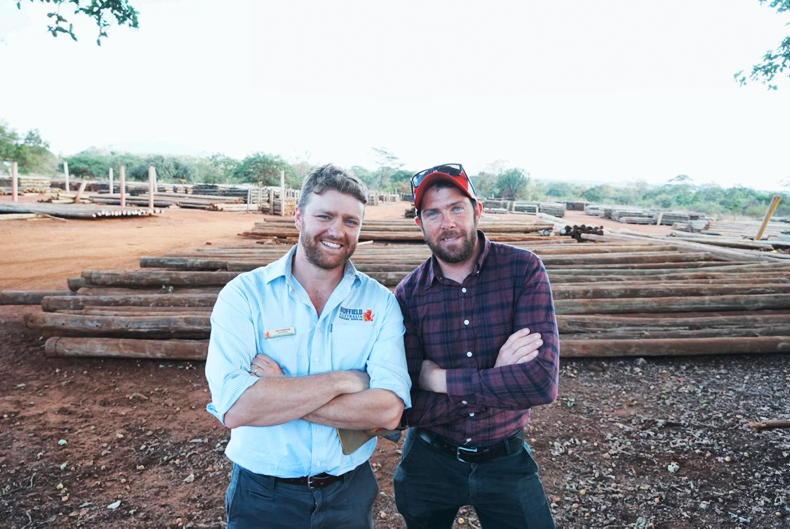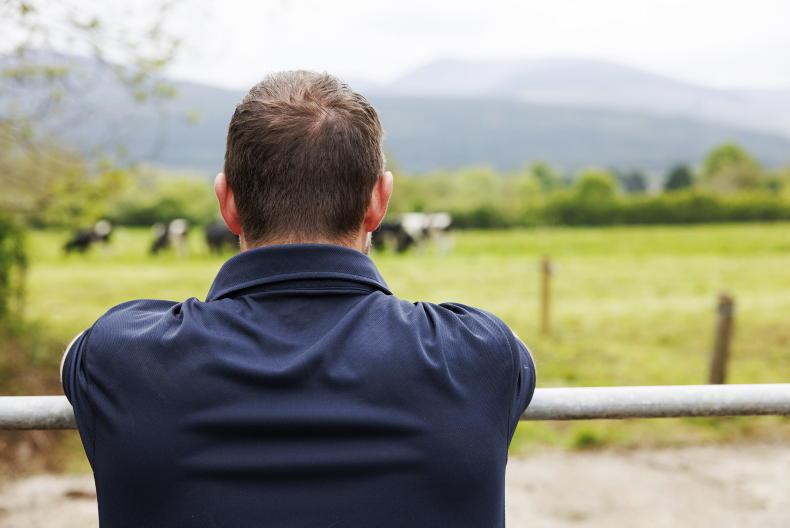One of the impressive farms that we visited south of Parkes in New South Wales was Moxey Farms, a dairy farm business milking well over 10,000 cows.
This very impressive integrated 8,800ha unit stood out in the countryside because it had access to irrigation water to produce fodder.
The farmyard and dairy are located in the centre of the property and the land stretches for about 30km in all directions.
It had been a family farm business for about 100 years, but, in recent times, it teamed up with three partners to expand the business - another farmer, a milk processor and Chinese investors.
It seemed a very professional unit and when we arrived, we had to sign in as visitors, remain on the bus during the tour and not take photographs (for fear of social media attacks).

Wilting is generally not a big problem under the Australian sun.
Other things you notice are the presence of defibrillators around the premises, no smoking signs and a mission statement that put the welfare of animals and workers at the heart of the business management.
Milking year-round
The cows were housed all year and they certainly looked comfortable.
When we visited in January 2020, that specific farm unit had over 7,600 cows and it continued to expand on numbers with the push to pass 8,000.
And the business has another two farms elsewhere with more than 5,000 cows and the associated young stock. All cows and calves are bedded on straw.

A view of part of the farmyard.
Milk is supplied year-round, so cows are continuously calving, with approximately 30 calves per day.
Calves are penned individually for the first 14 days and bottle-fed twice a day for two weeks.
After two weeks, they go to groups of 25 until they are about two months old, at which point they go outdoors in groups of 52.
Then all pens are disinfected to be ready for the next group to come in.
Calves do not suckle the cow at all and all colostrum is pasteurised.
The bulls are sold at six months of age and the heifers are reared. All feed intake is monitored during all of this.
It takes 20,000 acres of crops to produce the fodder for the animals on this farm.
Water for irrigation comes from boreholes and the local river (when available).
Irrigation is a mix of flood and pivot systems. Access to water is controlled and licenced.
AD plant
Power for the irrigation pumps is generated from the farm’s underground anaerobic digestion (AD) facility located in the centre of farmyard complex.
This produces three megawatts (MW) of electrical output and the facility cost $25m (around €16m) to install.

Irrigation, both pivot and surface, is critical for fodder production but the electricity for pumping is farm-produced from its own AD plant.
The water in the manure from the houses is separated and recycled and the fibrous material then goes to the AD plant. It takes about 21 days for the slurry to go through the process.
Some of the gas produced is recycled within the system to agitate the liquid during digestion. The rest goes to a pipeline and is scrubbed biologically for use. This gas is then used to power two 1.5MW gas-fired generator units.
Around 60% of the power produced is used on the farm and the remainder is exported. The farm had to invest in power lines to facilitate this export. The export capacity means that the farm can sell green carbon credits.
Moxey Farms Our Brand [2017] from Chello.
We were told that the AD plant generates one carbon credit per thousand kilowatts of power.
When we visited in early 2020, each credit was worth $50 (€32) on average, but this has ranged from $30 to $90.
Handling of the carbon credits is managed by a broker. The investment was estimated to have an eight- to 10-year pay-back time, with the value of the carbon credits being the main variable.
The digestate is regarded as being cleaner than slurry and has less odour. Some of it is mixed with calf straw for spreading.
The liquid from the process is treated subsequently, cleaned and stored in a big dam or lagoon to feed back into the irrigation system.
240 staff
Driving around the farmyard, it was obvious that the cows were happy and comfortable. They were mainly Holstein Friesians and bred using AI.
There were 240 staff working on this farm, with another 50 on other farms. These are mainly involved in transport, crop production, construction and delivery and mechanisation.

Maize accounted for a significant proportion of the 250,000 tonnes of silage made annually at Moxey Farms.
There are a lot of buildings on the farm and construction was continuing at that time. People, feed and water were cited as the major limiting factors to further expansion.
The doors on the different buildings have automated sensors to allow the cows move about. The houses are kept at around 25C and they use water and fans to help cool the air.
Nozzles are located beside the feeding areas to cool the animals by wetting them where they are standing. The cows are housed and managed in 500-cow lots and the same for milking.
There were two milking parlours on the farm - one parallel unit and one 80-cow rotary.
Two cows enter the rotary unit at the same time, enabling it to milk 600 cows per hour and run at between 94% and 96% occupancy.
Cows are milked three times per day and the parlour runs almost 24 hours, with a break twice a day for washing.
Cow lactation averages 300 days and they expected to average four lactations per cow.
They do not cull on age, but they are always trying to improve herd genetics. Milk meters and monitors are used to help identify milk and health issues.
Four hectares of silage slab
The farm supplies all its own mechanisation and it has capacity for 250,000t of silage storage on four hectares of concrete slabs.
Silage is mainly made from cereals (including maize), with some alfalfa. The farm does a lot of double cropping and they aim to produce 30t DM/ha/year.
The land in the region is generally low in phosphate, but satisfactory for potash. The manure is tested every three months and the soil is also tested regularly to ensure that everything remains in balance.
One of the impressive farms that we visited south of Parkes in New South Wales was Moxey Farms, a dairy farm business milking well over 10,000 cows.
This very impressive integrated 8,800ha unit stood out in the countryside because it had access to irrigation water to produce fodder.
The farmyard and dairy are located in the centre of the property and the land stretches for about 30km in all directions.
It had been a family farm business for about 100 years, but, in recent times, it teamed up with three partners to expand the business - another farmer, a milk processor and Chinese investors.
It seemed a very professional unit and when we arrived, we had to sign in as visitors, remain on the bus during the tour and not take photographs (for fear of social media attacks).

Wilting is generally not a big problem under the Australian sun.
Other things you notice are the presence of defibrillators around the premises, no smoking signs and a mission statement that put the welfare of animals and workers at the heart of the business management.
Milking year-round
The cows were housed all year and they certainly looked comfortable.
When we visited in January 2020, that specific farm unit had over 7,600 cows and it continued to expand on numbers with the push to pass 8,000.
And the business has another two farms elsewhere with more than 5,000 cows and the associated young stock. All cows and calves are bedded on straw.

A view of part of the farmyard.
Milk is supplied year-round, so cows are continuously calving, with approximately 30 calves per day.
Calves are penned individually for the first 14 days and bottle-fed twice a day for two weeks.
After two weeks, they go to groups of 25 until they are about two months old, at which point they go outdoors in groups of 52.
Then all pens are disinfected to be ready for the next group to come in.
Calves do not suckle the cow at all and all colostrum is pasteurised.
The bulls are sold at six months of age and the heifers are reared. All feed intake is monitored during all of this.
It takes 20,000 acres of crops to produce the fodder for the animals on this farm.
Water for irrigation comes from boreholes and the local river (when available).
Irrigation is a mix of flood and pivot systems. Access to water is controlled and licenced.
AD plant
Power for the irrigation pumps is generated from the farm’s underground anaerobic digestion (AD) facility located in the centre of farmyard complex.
This produces three megawatts (MW) of electrical output and the facility cost $25m (around €16m) to install.

Irrigation, both pivot and surface, is critical for fodder production but the electricity for pumping is farm-produced from its own AD plant.
The water in the manure from the houses is separated and recycled and the fibrous material then goes to the AD plant. It takes about 21 days for the slurry to go through the process.
Some of the gas produced is recycled within the system to agitate the liquid during digestion. The rest goes to a pipeline and is scrubbed biologically for use. This gas is then used to power two 1.5MW gas-fired generator units.
Around 60% of the power produced is used on the farm and the remainder is exported. The farm had to invest in power lines to facilitate this export. The export capacity means that the farm can sell green carbon credits.
Moxey Farms Our Brand [2017] from Chello.
We were told that the AD plant generates one carbon credit per thousand kilowatts of power.
When we visited in early 2020, each credit was worth $50 (€32) on average, but this has ranged from $30 to $90.
Handling of the carbon credits is managed by a broker. The investment was estimated to have an eight- to 10-year pay-back time, with the value of the carbon credits being the main variable.
The digestate is regarded as being cleaner than slurry and has less odour. Some of it is mixed with calf straw for spreading.
The liquid from the process is treated subsequently, cleaned and stored in a big dam or lagoon to feed back into the irrigation system.
240 staff
Driving around the farmyard, it was obvious that the cows were happy and comfortable. They were mainly Holstein Friesians and bred using AI.
There were 240 staff working on this farm, with another 50 on other farms. These are mainly involved in transport, crop production, construction and delivery and mechanisation.

Maize accounted for a significant proportion of the 250,000 tonnes of silage made annually at Moxey Farms.
There are a lot of buildings on the farm and construction was continuing at that time. People, feed and water were cited as the major limiting factors to further expansion.
The doors on the different buildings have automated sensors to allow the cows move about. The houses are kept at around 25C and they use water and fans to help cool the air.
Nozzles are located beside the feeding areas to cool the animals by wetting them where they are standing. The cows are housed and managed in 500-cow lots and the same for milking.
There were two milking parlours on the farm - one parallel unit and one 80-cow rotary.
Two cows enter the rotary unit at the same time, enabling it to milk 600 cows per hour and run at between 94% and 96% occupancy.
Cows are milked three times per day and the parlour runs almost 24 hours, with a break twice a day for washing.
Cow lactation averages 300 days and they expected to average four lactations per cow.
They do not cull on age, but they are always trying to improve herd genetics. Milk meters and monitors are used to help identify milk and health issues.
Four hectares of silage slab
The farm supplies all its own mechanisation and it has capacity for 250,000t of silage storage on four hectares of concrete slabs.
Silage is mainly made from cereals (including maize), with some alfalfa. The farm does a lot of double cropping and they aim to produce 30t DM/ha/year.
The land in the region is generally low in phosphate, but satisfactory for potash. The manure is tested every three months and the soil is also tested regularly to ensure that everything remains in balance.














SHARING OPTIONS